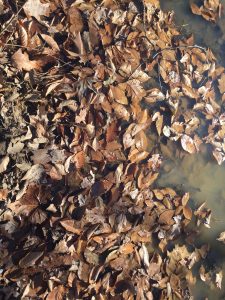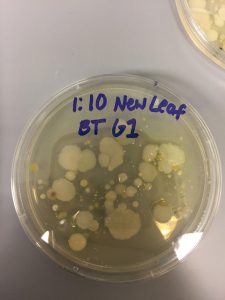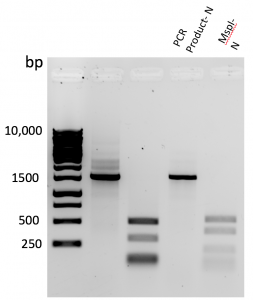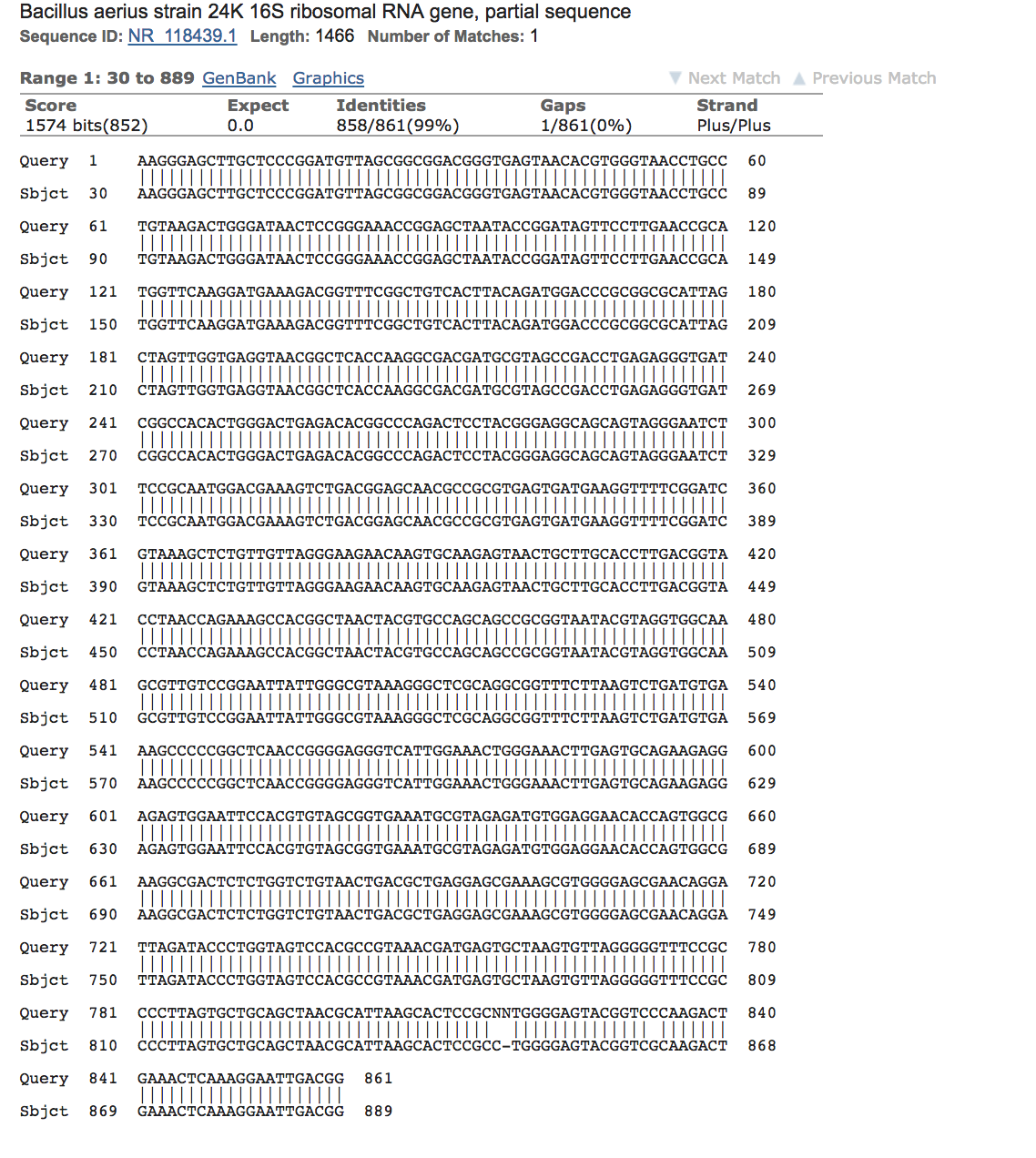Bacillus aerius is a gram-positive bacteria which has been cultured by Shivaji and colleagues from various atmospheric altitudes to show that microbes get transported through the air and into different parts of the world.
References:
- Shivaji, S. Chaturvedi, P. Suresh, K. Reddy, GSN. Dutt, CBS. Wainwright, M. Narlikar, JV. Bhargava, PM. 2006. Bacillus aerius sp nov., Bacillus aerophilus sp nov., Bacillus stratosphericus sp nov and Bacillus altitudinis sp nov., isolated from cryogenic tubes used for collecting air samples from high altitudes. 56(7): 1465-1473.
Date Collected: February 9, 2017
Methods for Isolation and Identification:
- A sample of leaf litter (that has not been fully decomposed) was collected near Buffalo Creek in Lancer Park (Figure 1). The sample was placed in sterile broth and pipetted into agar plates. It was spread using a hockey stick and incubated at room temperature.
-
One burnt yellow colony (Figure 2) was selected for 16S rRNA gene sequencing by PCR amplification.
-
The product of PCR amplification was digested with MspI and that DNA was sequenced to determine the genus and species of the bacteria.
 Figure 1. Location of Genomic Extraction
Figure 1. Location of Genomic Extraction

Figure 2. Colony chosen
Results:
- MspI Digestion (Figure 3): A 1,500 basepair product was amplified by PCR. After digestion with MspI, four bands at roughly 550 bp, 400 bp, 200 bp, 120 bp were identified.

Figure 3. PCR Amplification and MspI Enzyme Restriction Digestion
- Sequence Analysis (Figure 4): The sequenced PCR product made 1008 bases of high-quality reads that identified that genus and species. NCBI BLAST analysis revealed 99% with bases 17-(855) of the 16s rRNA gene of Bacillus aerius.

Figure 4. NCBI Blast Analysis
Contributed by: Brianna LaFratta and Tiffany Yun, BIOL 250 Spring 2017, Group 1